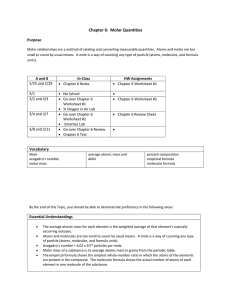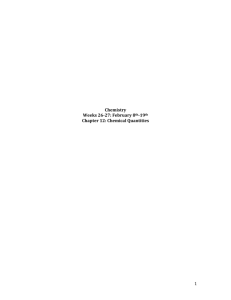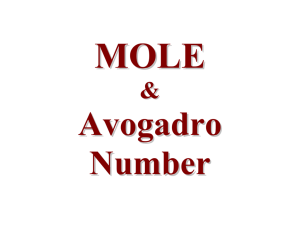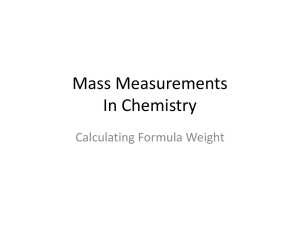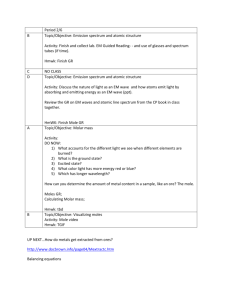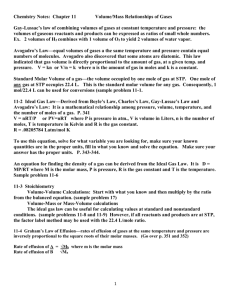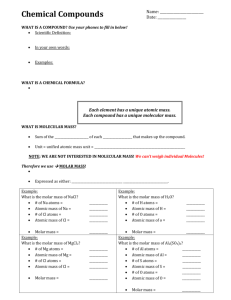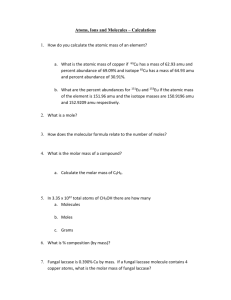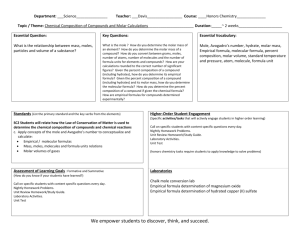Chapter 6: Molar Quantities Purpose Molar relationships are a
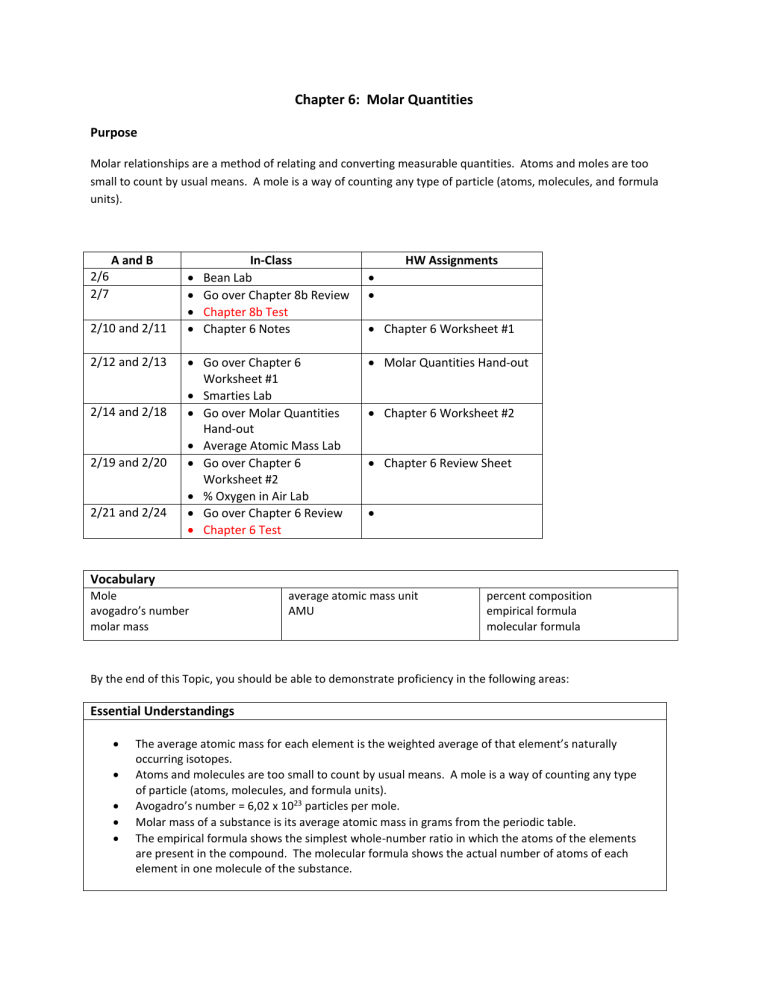
Chapter 6: Molar Quantities
Purpose
Molar relationships are a method of relating and converting measurable quantities. Atoms and moles are too small to count by usual means. A mole is a way of counting any type of particle (atoms, molecules, and formula units).
2/6
A and B In-Class
Bean Lab
2/7
Go over Chapter 8b Review
Chapter 8b Test
2/10 and 2/11
Chapter 6 Notes
2/12 and 2/13
Go over Chapter 6
Worksheet #1
Smarties Lab
2/14 and 2/18
Go over Molar Quantities
Hand-out
Average Atomic Mass Lab
2/19 and 2/20
Go over Chapter 6
Worksheet #2
% Oxygen in Air Lab
2/21 and 2/24
Go over Chapter 6 Review
Chapter 6 Test
HW Assignments
Chapter 6 Worksheet #1
Molar Quantities Hand-out
Chapter 6 Worksheet #2
Chapter 6 Review Sheet
Vocabulary
Mole avogadro’s number molar mass average atomic mass unit
AMU percent composition empirical formula molecular formula
By the end of this Topic, you should be able to demonstrate proficiency in the following areas:
Essential Understandings
The average atomic mass for each element is the weighted average of that element’s naturally occurring isotopes.
Atoms and molecules are too small to count by usual means. A mole is a way of counting any type of particle (atoms, molecules, and formula units).
Avogadro’s number = 6,02 x 10 23 particles per mole.
Molar mass of a substance is its average atomic mass in grams from the periodic table.
The empirical formula shows the simplest whole-number ratio in which the atoms of the elements are present in the compound. The molecular formula shows the actual number of atoms of each element in one molecule of the substance.
Essential Knowledge, and Skills
In order to meet this standard, it is expected that students will
perform calculations to determine the “weighted” average atomic mass.
perform conversions between mass, volume, particles, and moles of a substance.
perform stoichiometric calculations involving the following relationships:
mole-mole
mass-mass
mole-mass
SOL Standards
CH.2 The student will investigate and understand that the placement of elements on the periodic table is a
function of their atomic structure. The periodic table is a tool used for the investigations of a) average atomic mass, mass number, and atomic number
CH.4 The student will investigate and understand that chemical quantities are based on molar relationships.
Key concepts include a) Avogadro’s principle and molar volume
